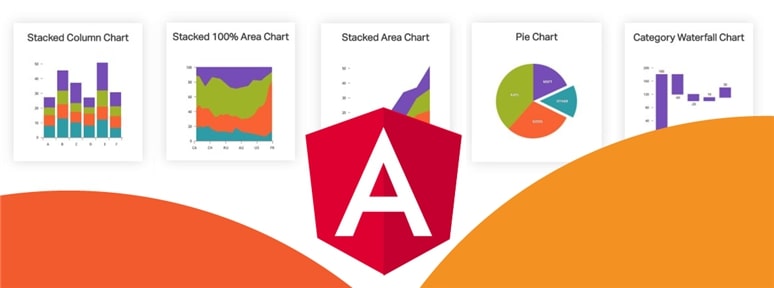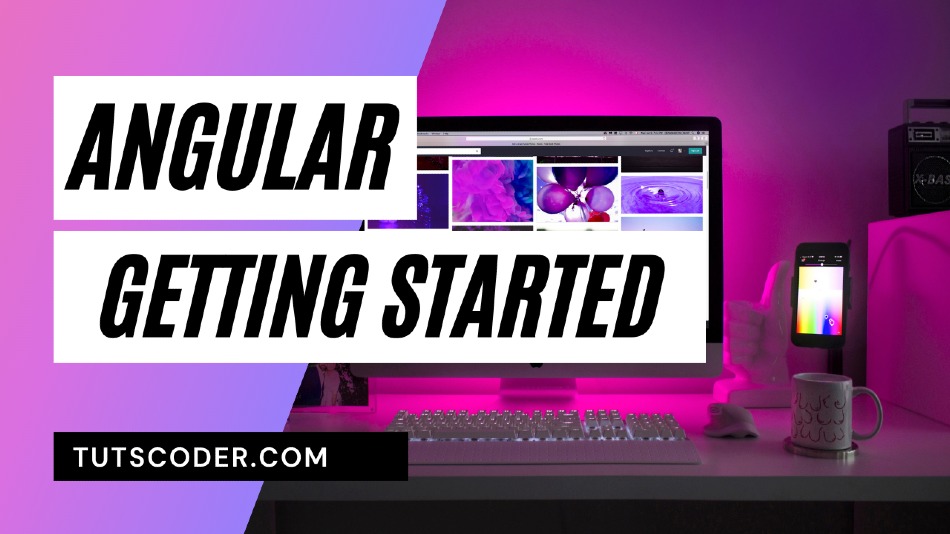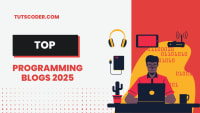Angular data visualization examples can be seen everywhere— on website content, through marketing white papers, in annual business reports. So, developers are often searching for the most robust all-in-one solution that allows them to handle and display industry-specific data in the most efficient and insightful way.
However, the market is bursting at the seams with data visualization libraries – both open-source and paid.
The pressing question, then, is how to choose the best Angular Data Visualization Library for your next data-driven project?
Even though you may think any charting library can serve the purpose, the moment you start building your app, you will realize things are quite different. Why?
Because there are several key factors, features, and capabilities in such UI libraries in Angular that must be considered before you make up your mind. Some libraries have all that you need, others don’t.
To help you choose the best Angular Data Visualization Library, this quick Angular Charts & Graph Library guide-like post will look at the following pillars:
- What is data visualization in Angular
- What does an effective Angular data visualization look like
- What factors and questions to consider before plotting your data
- Top features of any powerful charting tool
Angular Data Visualization in a Nutshell
To explain it in the simplest possible way, data visualizations in Angular are graphical representations of data with different visual elements like charts, graphs, or maps.
To be comprehensible and structured according to the context and the project itself, this data can be visualized in the form of pie slices, symbols, column graphs, treemaps, high-density maps, and other Angular chart types.
What Is an Effective Angular Data Visualization
There are certain things that define a powerful and effective data visualization in Angular. For instance, it can include things like:
- Features for further visual and performance customizations
- Styling options
- Responsiveness
- Ability to deliver information in the most concise way
- With customization options so users can easily manipulate data and interact with it
Below you can take a look at how one such well-structured but at the same time lively and informative enough Angular Stock Chart looks like.
What Factors and Questions To Consider Before Starting to Plot Your Data
Angular charts are a necessity in most Angular apps nowadays. Regardless of the industry you develop for, you must have a data visualization library that empowers you to handle even the biggest charting challenges.
To help you choose the most suitable one for you on the market, consider the following questions:
- What data needs to be handled? Complex, voluminous, live data, trends over time?
- What for are you going to use the library? Visual analytics, statistics, data storytelling or something else?
- What industry or department will the app serve? Marketing, Fin-tech, Healthcare, Education?
- What is the purpose? Internal reporting, financial analysis, stock evaluation or something else?
- Who will be using the chart? What are the users? Regular web page visitors looking for statistical information, Business users, marketers, data analysts?
- Do you require basic functionalities or something that comes with a full set of features, gauges, and more?
Top Features and Components of Any Powerful Charting Tool
One thing to keep in mind is that behind any powerful data visualization there’s a more powerful charting tool. We’ve gathered the top 5 things you should look for in the charting tool of your choice.
1. The chart & graph types it packs
The number one thing that defines all powerful charting platforms and libraries is the types of charts that it delivers. Especially if you work on a large app or the current project is set to scale. In this case, you definitely need a library with a full set of chart types and visualization options for any scenario.
The most essential Angular chart types your library should support are Pie chart, Area chart, Bar chart, Donut chart, Column chart, Financial/Stock chart, Line chart, Bubble chart, Scatter chart, Treemap.
If you want to be able to render high volumes of data in any possible way, make sure the Angular Data Visualization you’re looking for has them.
2. The features and the customization options it supports
It’s one thing having a wide variety of charts and graphs to use but being feature-rich is another story. The must-have interaction features to look for in the library that optimize user experience (UX) are highlighting, zooming, animations, performance, interactive panning, mouse, keyboard and touch controls, real-time data support, advanced tooltips, data point event handlers, interactivity.
3. Working with local or remote data integration
When we talk about charts, we talk about data. The best Angular Data Visualization library, respectively, must be able to connect to any data source, delivering the most efficient data handling and data binding capabilities.
4. Ease of use vs flexibility
Ideally, your charting library must provide both. But let’s be realistic. In most cases, Angular data visualization libraries focus on either delivering better usability or more options to choose from. Therefore, if you want to have full control of how you handle and display data, go for a flexibility-driven charting library.
It usually packs a full set of features and more customizable UX/UI elements. However, if you want simplicity and things like reusable components and code, choose a library that aims at delivering ease-of-use.
5. Learning resources and documentation
Finally, choosing the best Angular Data Visualization library requires thorough consideration of some additional factors. Think about well-written documentation, chart samples, ability to explore the code behind them, how-to videos and tutorials, blogs, forums, GitHub transparency, and support.
After all, this is what will guide you through any process along the way. Especially if you are a tech newbie or a programmer with less technical know-how.
In Conclusion
Maps, charts, graphs and all other types of visual representations of data can be seen anywhere. People use data visualizations for business, marketing, financial, fintech purposes with the idea to turn raw data into understandable insights in the best possible way.
And as we previously said, behind any powerful data visualization there’s a powerful charting library.
However, the number of charting tools available today is overwhelming. That’s why in order to rule out the tools that won’t match your development purposes, the end-user, and the data and the visual context, you must consider things like types of charts that are packed, features, data integration capabilities, flexibility and ease-of-use, and, of course, additional learning resources.







Leave a Comment
Share Your Thoughts